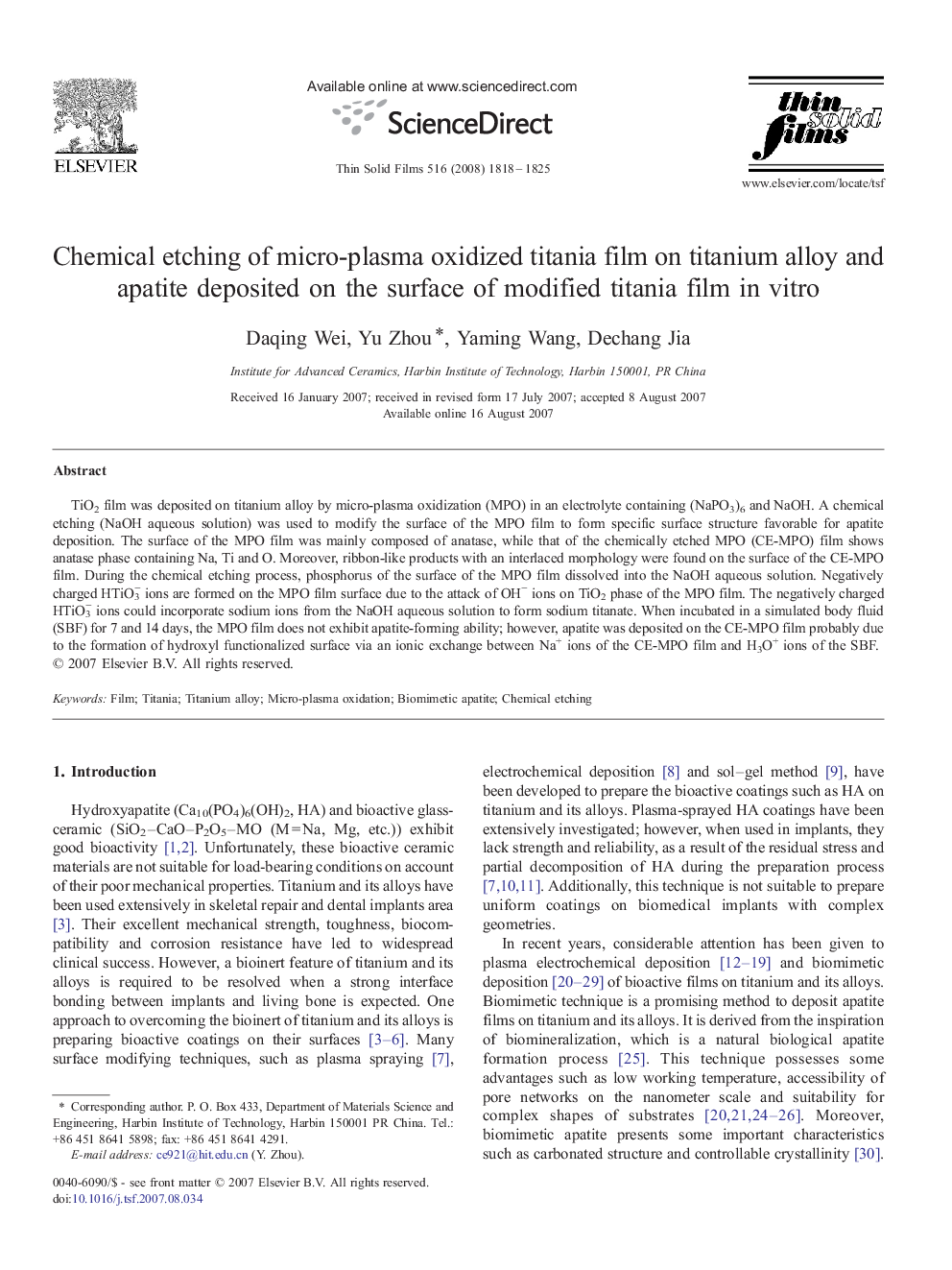| Article ID | Journal | Published Year | Pages | File Type |
|---|---|---|---|---|
| 1674272 | Thin Solid Films | 2008 | 8 Pages |
Abstract
TiO2 film was deposited on titanium alloy by micro-plasma oxidization (MPO) in an electrolyte containing (NaPO3)6 and NaOH. A chemical etching (NaOH aqueous solution) was used to modify the surface of the MPO film to form specific surface structure favorable for apatite deposition. The surface of the MPO film was mainly composed of anatase, while that of the chemically etched MPO (CE-MPO) film shows anatase phase containing Na, Ti and O. Moreover, ribbon-like products with an interlaced morphology were found on the surface of the CE-MPO film. During the chemical etching process, phosphorus of the surface of the MPO film dissolved into the NaOH aqueous solution. Negatively charged HTiO3â ions are formed on the MPO film surface due to the attack of OHâ ions on TiO2 phase of the MPO film. The negatively charged HTiO3â ions could incorporate sodium ions from the NaOH aqueous solution to form sodium titanate. When incubated in a simulated body fluid (SBF) for 7 and 14Â days, the MPO film does not exhibit apatite-forming ability; however, apatite was deposited on the CE-MPO film probably due to the formation of hydroxyl functionalized surface via an ionic exchange between Na+ ions of the CE-MPO film and H3O+ ions of the SBF.
Related Topics
Physical Sciences and Engineering
Materials Science
Nanotechnology
Authors
Daqing Wei, Yu Zhou, Yaming Wang, Dechang Jia,
